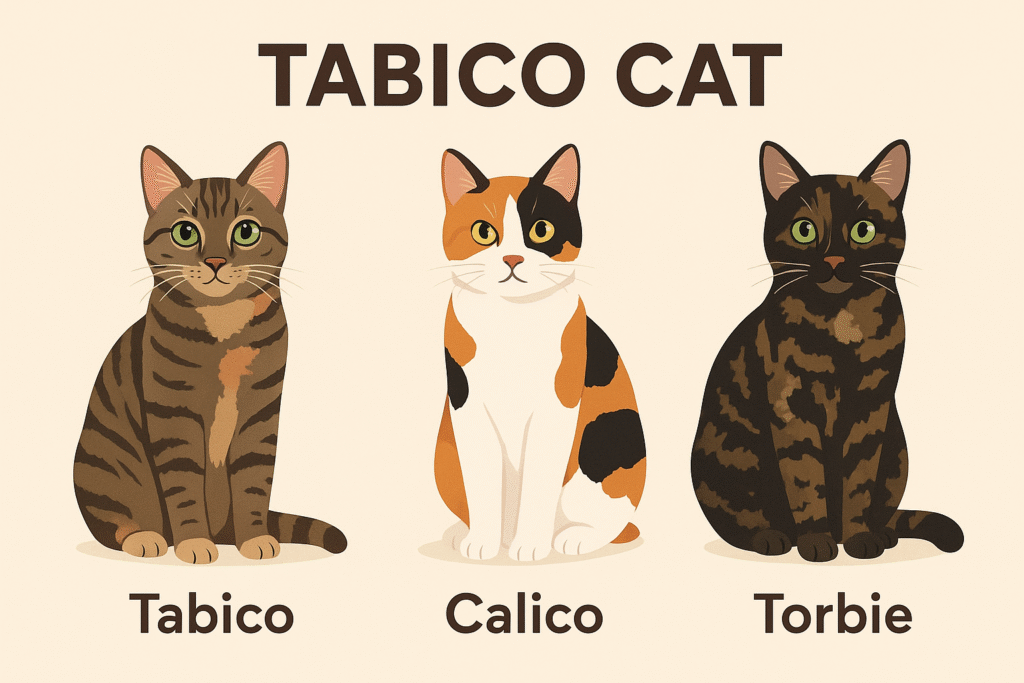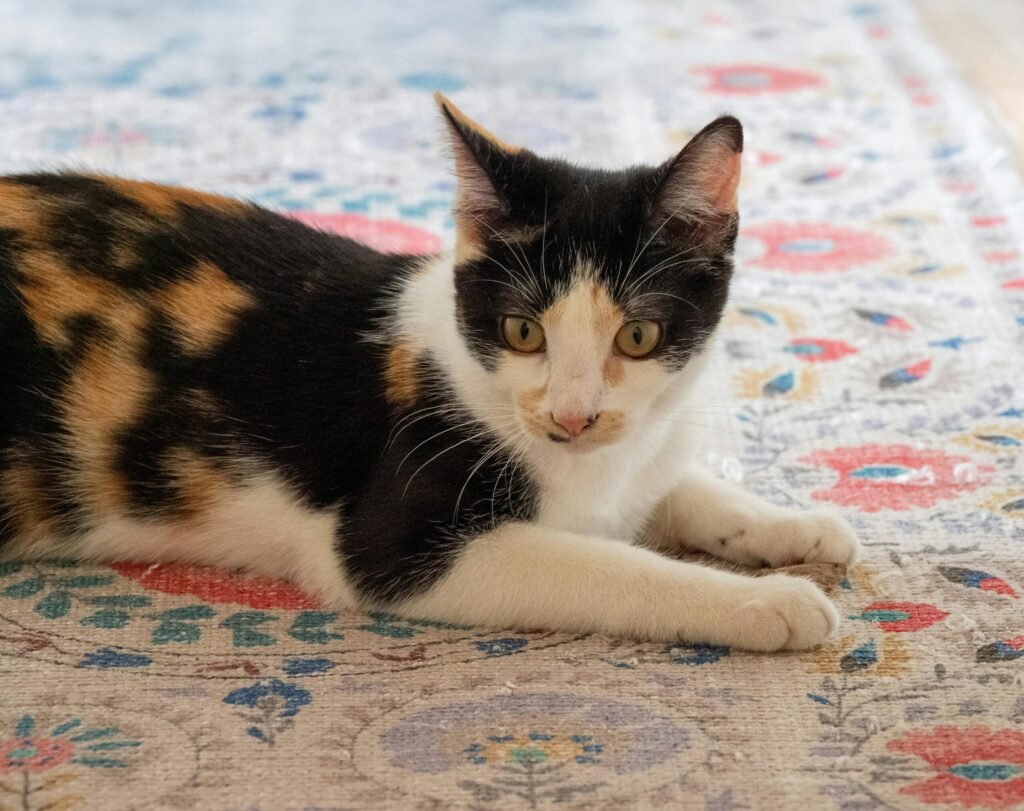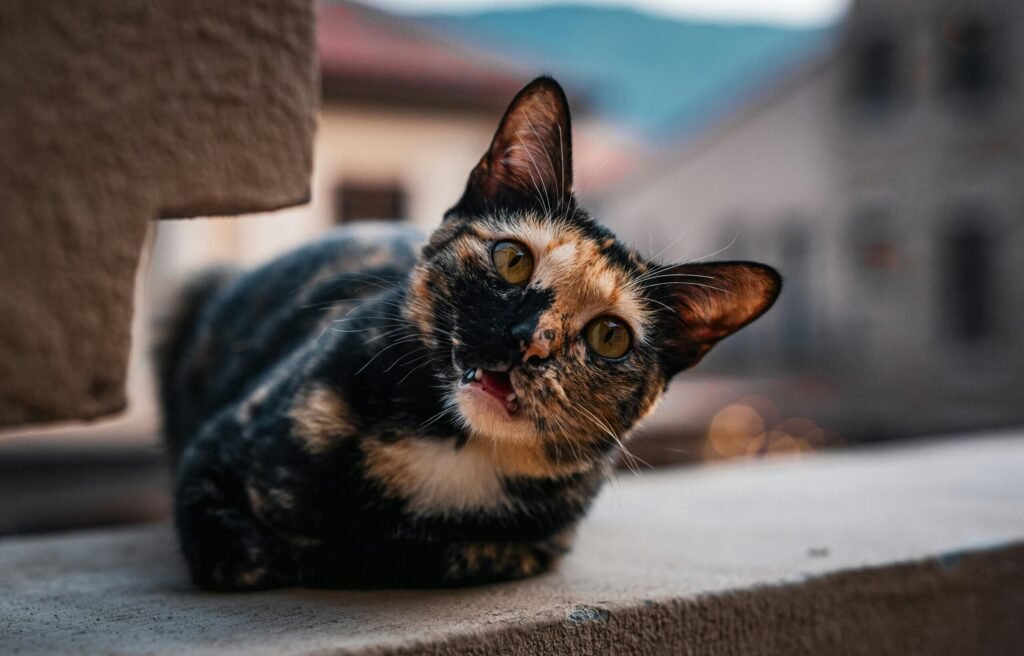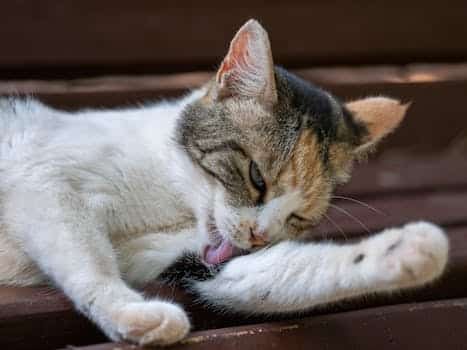Post Disclaimer
Catopedea shares information for educational and general interest purposes only. Our content is not a substitute for professional veterinary advice, diagnosis, or treatment. Always consult a licensed veterinarian for concerns about your cat’s health, diet, or behavior.
Tortoiseshell cats are among the most striking and unique felines you’ll encounter. Their distinct coat patterns are a combination of black, red, and cream hues, creating a beautiful, marbled effect. These cats are known for their unique look, as well as their captivating personalities. Whether you’re considering adopting one or you’re simply curious about these special cats, this guide will answer all your questions about tortoiseshell cats, from their lifespan to their behavior, care tips, and everything in between.
What is a Tortoiseshell Cat?
Tortoiseshell cats aren’t a specific breed, but rather a color pattern that can appear in several breeds. The term “tortoiseshell” refers to the unique coat pattern that combines patches of black, red, orange, and sometimes cream and white. It’s often described as a “mosaic” or “patchwork” effect, and no two tortoiseshell cats look exactly alike. Their unique coats are made up of a mixture of warm and dark colors, which makes them stand out among other felines.
Key Variations in Tortoiseshell Cats

There are various variations of the tortoiseshell pattern, and understanding them can be helpful when identifying a tortie. For instance:
- Classic Tortoiseshell – In classic tortoiseshell cats, the colors are typically mixed in larger, more distinct patches. These cats exhibit a striking blend of darker and lighter shades of black, red, and cream.
- Dilute Tortoiseshell – These cats have a much softer and lighter appearance. Instead of deep black and red shades, dilute torties sport pastel shades, with pale gray replacing black and soft cream in place of the red. This version of the tortoiseshell pattern is just as beautiful but softer on the eyes.
- Calico Comparison – While both calico and tortoiseshell cats share similar colors, calicos are distinct in their patterns. Calicos, unlike tortoiseshells, often have white patches in their coats. This is the biggest difference between the two. You may also find tortoiseshell cats with a bit of white, especially in certain patterns like “harlequin” or “chimera.”
If you’re intrigued by cats with mixed patterns, you might also be interested in Tabico cats, which combine the tabby pattern with calico coloring. Tabico are a rare but stunning variation of the calico cat and share some similarities with both tortoiseshell and calico cats. For more on this unique breed, check out our post on Tabico Cats: The Rare Beauty of Tabby-Calico Cats.
Are Tortoiseshell Cats Male or Female?
A fascinating aspect of tortoiseshell cats is that the majority of them are female. This is due to the genetics behind the color pattern. Tortoiseshell coloration is linked to the X chromosome. Since females have two X chromosomes (XX), they are more likely to inherit the coloring. Males, on the other hand, only have one X chromosome (XY), making it much less likely for them to carry the tortoiseshell gene.
Male Tortoiseshell Cats

In fact, male tortoiseshell cats are incredibly rare. Only about 1 in 3,000 tortoiseshell cats are male, and most of these males are sterile. This is due to a rare genetic anomaly known as Klinefelter syndrome, which results in the male cat having an extra X chromosome. Because of their rarity, male tortoiseshells are often more expensive and highly sought after. If you do come across a male tortoiseshell cat, you’re encountering a rare gem of the feline world.
How Long Do Tortoiseshell Cats Live?
Tortoiseshell cats typically live an average of 12 to 16 years, although this can vary depending on whether they are kept indoors or allowed outdoors. Indoor tortoiseshell cats tend to live longer because they face fewer risks, such as traffic or predators. On the other hand, outdoor cats face more dangers, and their lifespan may be shortened due to accidents or exposure to diseases.
Factors That Affect Lifespan
- Diet: A balanced, high-quality diet is crucial for longevity. Ensure your tortoiseshell cat eats nutrient-rich food with sufficient protein, vitamins, and minerals. This helps them maintain their health, build a strong immune system, and protect their bones and muscles.
- Vet Visits: Regular veterinary visits are essential for monitoring your tortie’s health. Routine check-ups allow your vet to catch early signs of potential health issues like arthritis, dental problems, or heart disease.
- Exercise and Play: Cats are natural hunters, and providing them with plenty of mental and physical stimulation is important. Encourage your tortoiseshell to play with toys that simulate hunting and climbing to keep them fit and healthy.
- Indoor vs Outdoor: As mentioned earlier, indoor tortoiseshell cats live longer because they face fewer risks. An indoor cat is not exposed to the dangers of traffic, predators, or harsh weather. Moreover, they are less likely to contract infectious diseases like feline leukemia or FIV (feline immunodeficiency virus).
By ensuring that your tortoiseshell gets a proper diet, regular vet visits, and plenty of stimulation, you can help extend their life expectancy and keep them in good health for many years.
Personality and Behavior

Tortoiseshell cats are known for their fiery personalities and independent nature, often described by owners as “sassy” or having a trait known as “tortitude.” Tortoiseshell cats are intelligent, confident, and assertive, which makes them both entertaining and a little challenging at times.
What is Tortitude?
The term “tortitude” is often used to describe the strong-willed, sometimes stubborn, and occasionally feisty behavior of tortoiseshell cats. They are known to be fiercely independent and will often express themselves in a way that other cats might not. For instance, they may demand attention one moment and seek solitude the next. They also tend to be vocal and may meow at you to get their way, but they are also loving and affectionate when they choose to be.
Despite their sometimes “sassy” nature, many tortoiseshell cats form deep, affectionate bonds with their owners. They often enjoy spending time with their human family members, sitting on laps, or curling up beside them. However, because of their independent streak, they also enjoy time alone and are not typically clingy cats.
Temperament
While some tortoiseshells can be a bit temperamental, it’s important to note that temperament can vary widely from one cat to another. Many tortoiseshell cats are sweet, affectionate, and easy-going, while others may be more reserved or stubborn. Early socialization and gentle training can help shape their personalities, ensuring that they become well-behaved companions.
Appearance and Coat Patterns
Tortoiseshell cats are known for their stunning, multicolored coats. Their fur can come in various combinations of black, red, orange, and cream, often with a mix of patchy or swirled patterns. Some tortoiseshells may even have a few white spots, though this is not typical for the pattern.
Dilute Tortoiseshells
Tortoiseshell cats can also appear in a “dilute” form, where the colors are paler, such as a soft gray replacing black and a muted orange replacing red. This variant is often sought after for its lighter, pastel-colored coats. The dilute tortoiseshell cats are equally beautiful and just as unique as their classic counterparts.
Are Grey Tortoiseshell Cats Rare?
While some may consider grey tortoiseshell cats rare, they are not impossible to find. Grey or silver tortoiseshells occur when the cat inherits a dilute gene that lightens the traditional tortoiseshell colors. These cats are sought after for their softer and more pastel-colored coats, and their rare beauty often makes them stand out even more.
Tortoiseshells with White
Unlike calico cats, which have a distinct three-color pattern with white, tortoiseshell cats typically lack white. However, some tortoiseshell cats do have a bit of white, especially in the “harlequin” or “chimera” pattern types. These cats often have white on their chest, paws, or face, but their primary coat still retains the characteristic black, red, and cream pattern.
Cost and Rarity
The cost of tortoiseshell cats can vary widely, depending on factors such as breed, age, and whether the cat is a purebred. On average, tortoiseshell cats can cost anywhere from $100 to $1,000 or more. Purebred tortoiseshells, especially those with pedigrees, can be quite expensive. Male tortoiseshell cats, being extremely rare, may fetch higher prices due to their scarcity.
Adoption and Rescue
While purchasing a tortoiseshell from a breeder can be expensive, adopting one from a shelter or rescue organization is often a more affordable option. Shelters and rescues are filled with tortoiseshell cats of all ages, and adopting a cat gives a deserving animal a second chance at a happy life. Adoption fees typically range from $50 to $200, depending on the shelter, location, and age of the cat.
Adopting a cat is a fulfilling experience, and you’ll find that shelter tortoiseshell cats are just as loving and loyal as those bought from breeders.
Care Tips for Tortoiseshell Cats
Caring for a tortoiseshell cat involves basic feline care, but there are a few tips to keep in mind for this particular pattern:
Diet and Nutrition
Tortoiseshell cats are generally healthy, but like all cats, they require a balanced diet with high-quality protein sources. Ensure that your cat eats well-balanced meals that provide all the nutrients she needs. Make sure her food contains adequate levels of protein, healthy fats, and essential vitamins and minerals. If you are uncertain about your cat’s nutritional needs, consult your veterinarian for recommendations based on her age, activity level, and health status.
Grooming
While tortoiseshell cats don’t require excessive grooming, their thick coats may need regular brushing to prevent matting, especially if they have longer fur. Brushing also helps reduce shedding, which is common in cats, and promotes a healthy coat by distributing natural oils throughout their fur.
Health Checks
Regular vet visits are essential for your tortoiseshell’s health. Make sure she gets her vaccines on time and discuss any health concerns with your veterinarian. Spaying or neutering your cat is also important for preventing unwanted pregnancies and reducing the risk of certain health issues, such as ovarian or testicular cancer.
If you notice any unusual behaviors or signs of illness, such as excessive grooming, changes in appetite, or lethargy, don’t hesitate to take your cat to the vet.
Common Questions About Tortoiseshell Cats
Can a calico cat have a tortoiseshell kitten?
Yes, calico cats can have tortoiseshell kittens. Since both calico and tortoiseshell cats share similar coat patterns, it’s possible for a calico to produce kittens with tortoiseshell patterns, especially if the male cat is also a tortoiseshell or has similar genetics.
Are tortoiseshell cats good luck?
In some cultures, tortoiseshell cats are considered symbols of good luck. Their unique appearance and spirited personality make them stand out as special, lucky companions.
Are tortoiseshell cats more aggressive than other cats?
Not necessarily. While tortoiseshells are often described as having a fiery personality, aggression is not a guaranteed trait. It all depends on the individual cat’s temperament, environment, and upbringing.
Are tortoiseshell cats usually female?
Yes, most tortoiseshell cats are female, due to the genetics behind the color pattern. Male tortoiseshells are rare and typically sterile
Can tortoiseshell cats have white spots?
Yes, some tortoiseshell cats may have small white patches, although it’s less common. This can occur in certain coat variations like harlequin or chimera patterns.
Conclusion
Tortoiseshell cats are truly one-of-a-kind. Their striking coats, spirited personalities, and loyal companionship make them unforgettable pets. While they may sometimes show a bit of “tortitude,” most torties balance independence with affection, forming deep bonds with their families.
If you’re considering adopting a tortoiseshell, remember that proper care is key. A balanced diet, regular vet visits, and enrichment like cat trees and condos will help them thrive. Keeping them indoors also reduces risks and supports a longer, healthier life many tortoiseshells live well into their teens when cared for properly.
Their genetics also make them fascinating. Male tortoiseshells are extremely rare due to conditions like Klinefelter syndrome, as explained by the Cornell Feline Health Center. This rarity only adds to the allure and mystery of the tortoiseshell pattern.
Want to explore other unique cat coat patterns? Check out our guide on Tabico Cats or learn more about odd cat behaviors that make felines so quirky and lovable.
With the right care, patience, and love, tortoiseshell cats can be lifelong companions that bring color, character, and charm into your home.



Pingback: Cat Trees for Large Cats: Best Towers & Condos (2025) - catopedea.com
Pingback: Can Siamese Cats Be Black? The Truth About Their Coat Colors - catopedea.com